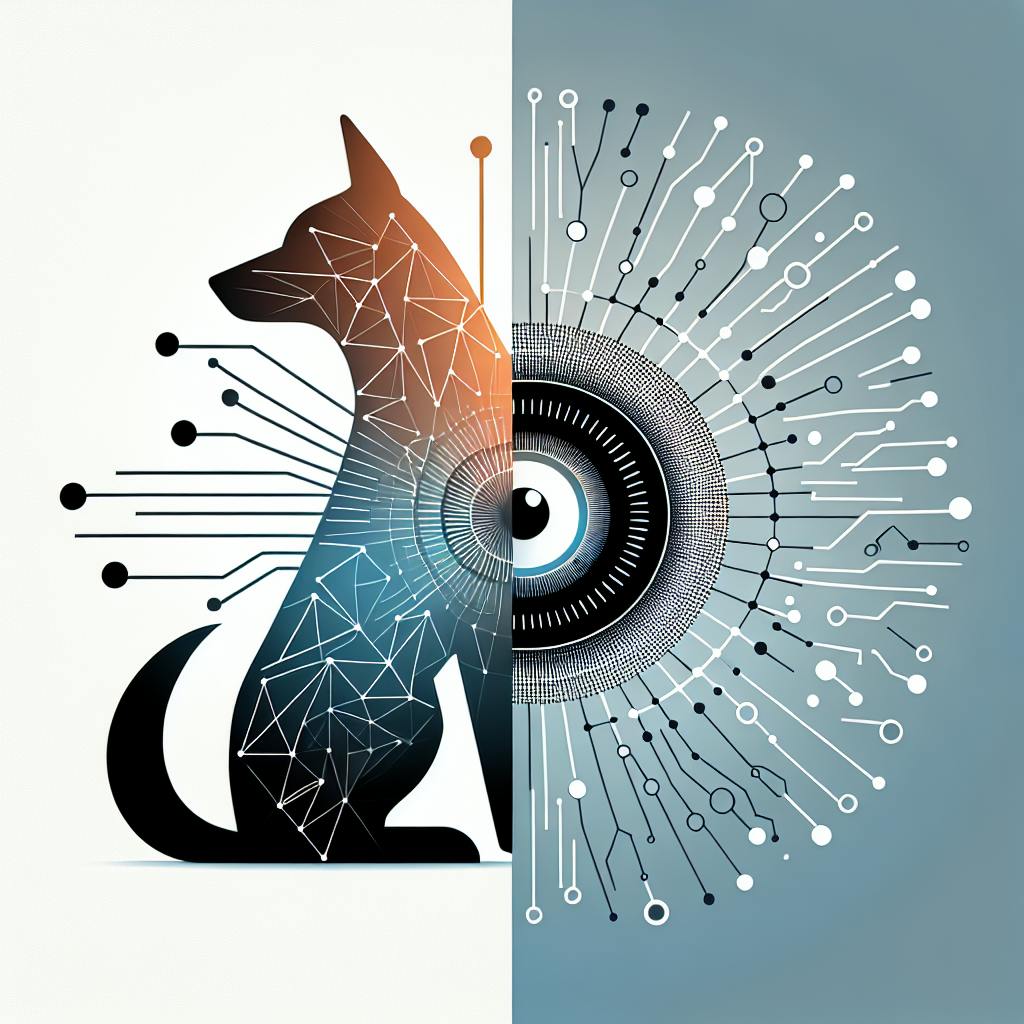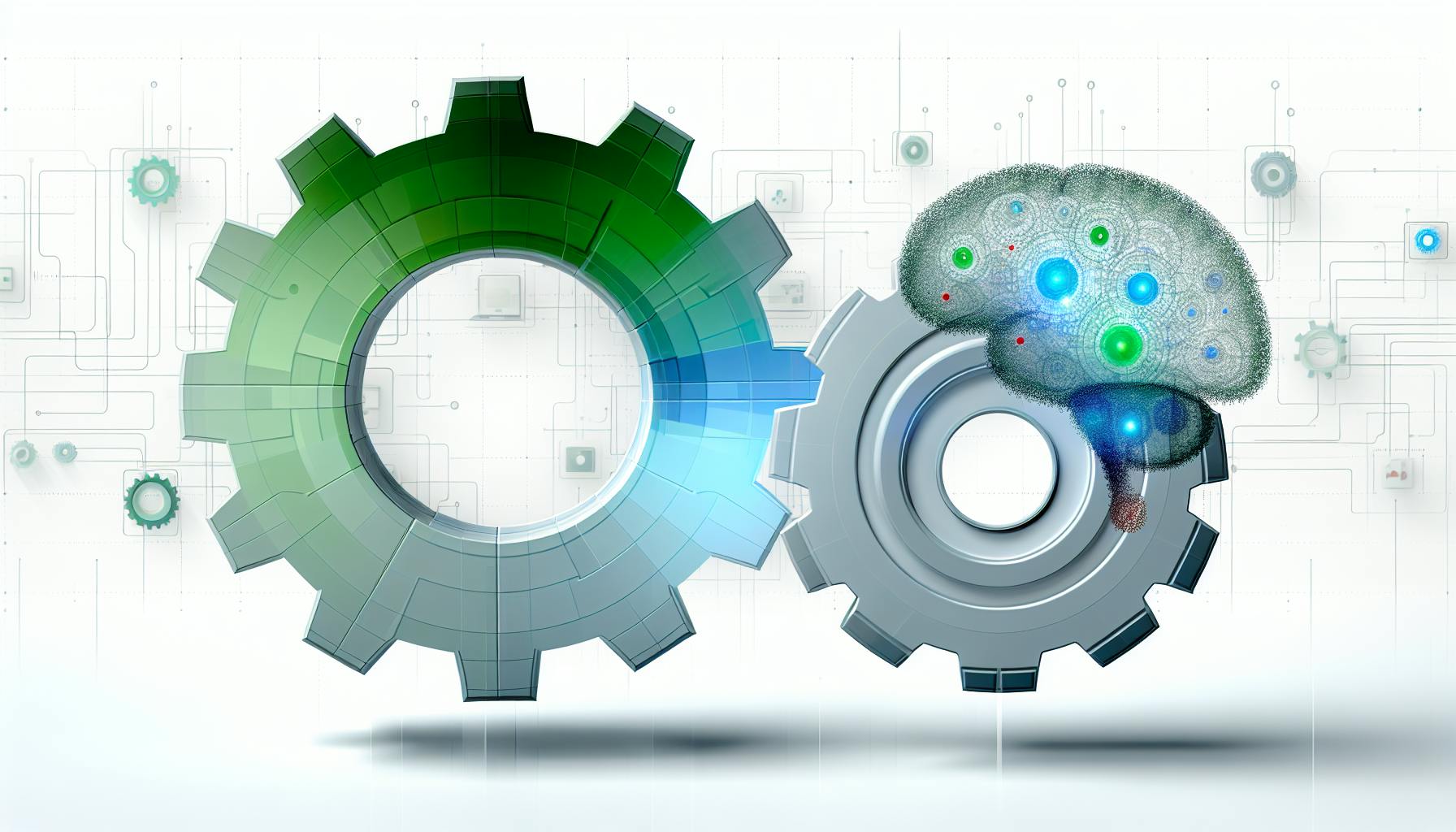IT operations teams struggle with increasingly complex and dynamic infrastructures.
AIOps solutions leverage big data, machine learning, and automation to help IT operations scale efficiently.
This article explores the key capabilities of AIOps for transforming IT operations, including accelerating incident response, optimizing network and infrastructure management, and enabling digital transformation.Bold and italic text emphasizes key points, while maintaining a professional tone suited for a business audience.
Introduction to AIOps and Scaling IT Operations
As IT environments grow in complexity, traditional monitoring and management approaches struggle to keep pace. AIOps platforms leverage big data analytics, machine learning, and automation to enhance IT operations performance, efficiency, and insight.
AIOps stands for Artificial Intelligence for IT Operations. It combines big data and machine learning to analyze large volumes of IT operations data in real-time. This enables AIOps platforms to automatically detect anomalies, identify root causes of issues, and take corrective actions.
Key capabilities of AIOps include:
- Predictive analytics - Continuously analyze metrics and logs to identify anomalies and predict problems before they occur. This shifts IT from reactive firefighting to proactive prevention.
- Intelligent correlation - Discover connections between disparate data sources to uncover the root cause of performance issues. This reduces mean time to resolution.
- Dynamic baselining - Automatically adjust performance baselines over time to account for changes. This eliminates false alerts during normal fluctuations.
- Incident response - Orchestrate and automate responses to incidents once detected. This accelerates remediation and recovery.
As IT environments scale in size and complexity across hybrid cloud and containerized environments, AIOps becomes critical to ensuring operational resilience and rapid issue resolution. The automation and intelligence AIOps provides allows understaffed IT teams to effectively manage exponentially growing volumes of performance data and events.
This introductory foundation sets the stage for more detailed explorations of how AIOps enhances predictive analytics, incident response, and other key IT operations capabilities at scale.
What are the 4 key stages of AIOps?
AIOps platforms utilize four key stages to achieve enhanced results for IT Operations workflows:
- Data Collection: AIOps ingests high volumes of machine-generated data from across the IT infrastructure. This includes metrics like application performance, infrastructure monitoring, database activity logs, network traffic data, and more. Advanced analytics and machine learning algorithms require sufficient data to detect anomalies accurately.
- Model Training: AIOps leverages supervised and unsupervised machine learning algorithms that are trained on historical performance data to establish a baseline of normal behavior. These trained models provide the reference point for detecting anomalies in real-time.
- Automation: AIOps enables automatic responses to IT incidents and outages based on anomaly severity, reducing mean time to resolution. Automated responses may include event correlation, notification alerts, auto-scaling resources, and more.
- Anomaly Detection and Continuous Learning: Leveraging the trained models, AIOps analyzes streaming performance data to rapidly detect anomalies and emerging issues. Detected anomalies also further enhance the ML models through continuous feedback loops.
These four pillars work together to help IT teams achieve proactive monitoring, accelerated troubleshooting, and advanced automation - all aimed at maximizing uptime and system performance.
How does AIOps differ from traditional IT operations?
Traditional IT operations rely on manually set thresholds and rules to monitor systems and trigger alerts. However, as modern IT environments grow more complex with new technologies like cloud, containers, and microservices, this approach struggles to keep up.
AIOps platforms utilize big data, machine learning, and other advanced analytics to automatically analyze metrics, logs, and events across the entire IT stack. This enables AIOps to:
- Detect anomalies - Identify unusual system behavior that falls outside normal patterns. This allows teams to catch issues proactively before they become outages.
- Reduce false alerts - Correlate events across data sources to suppress redundant alerts and pinpoint root cause. This cuts down on alert fatigue.
- Gain contextual insights - Analyze interdependencies between components to understand the full context of performance issues.
- Predict future behavior - Forecast trends in system behavior to get ahead of capacity, performance, and reliability problems.
- Automate remediation - Take automatic action to self-heal incidents through integrations with IT tools. This accelerates recovery.
In essence, AIOps serves as an intelligent assistant that augments human capability. It handles the heavy-lifting of analytics to provide actionable insights that optimize system health, availability, and efficiency. This enables IT teams to work smarter and more proactively.
How AI can be used in IT operations?
AI and machine learning are transforming IT operations in powerful ways. By applying advanced analytics to system and application performance data, AIOps platforms can detect anomalies and emerging issues across complex, dynamic IT environments. This enables faster incident response as well as more proactive optimization and capacity planning.
Some key applications of AI in IT ops include:
- Predictive analytics - Historical performance data and machine learning algorithms allow AIOps platforms to forecast trends and detect anomalies before they cause outages. This shifts IT monitoring from reactive to proactive.
- Automated remediation - Once an anomaly is detected, AIOps can trigger automated actions to resolve or mitigate the issue. This reduces mean time to resolution and IT workload.
- Log and event analysis - Parsing and correlating massive volumes of machine data to uncover performance issues or security threats.
- Intelligent alerting - Reducing alert noise by applying anomaly detection and dynamic thresholds rather than static limits. This surfaces the incidents that truly require attention.
- Capacity forecasting - Analyzing utilization patterns across resources to predict future capacity needs more accurately. This enables better infrastructure planning.
By leveraging AI and ML, next-generation AIOps platforms like Eyer.ai take IT operations and monitoring to the next level. Instead of just collecting data, these tools provide actionable intelligence to maintain optimal performance and availability across increasingly complex IT ecosystems.
How can IBM's AIOps solutions transform ITOps challenges to ITOps advantages?
IBM's AIOps solutions can help organizations transform IT operations challenges into advantages in several key ways:
Streamlining IT Operations
AIOps platforms like IBM's use machine learning algorithms to analyze large volumes of IT operations data in real-time. This enables the rapid detection and correlation of anomalies and events, accelerating incident response. Teams can leverage predictive analytics to get ahead of potential issues and automate repetitive tasks. This results in greater efficiency, productivity and lower costs.
Enhancing Visibility
The advanced analytics and data correlation capabilities of AIOps give unprecedented visibility across complex, hybrid environments. Teams gain clear insights into infrastructure health, application performance, user experiences and more. This allows them to optimize systems proactively and troubleshoot issues faster.
Improving IT Resiliency
By combining diverse data sets, AIOps spots emerging risks and patterns that point to potential failures. Organizations can implement automated prevention and self-healing measures to boost IT resiliency. This reduces downtime and protects critical business services.
Driving Innovation
Freed from manual monitoring and mundane upkeep tasks, IT teams can focus their talents on high-value initiatives that move the business forward. AIOps solutions become a launch pad for digital transformation.
In summary, IBM's AIOps offerings leverage the latest AI innovations to help IT operations teams work smarter, speedier and more proactively. This transforms challenges like skills gaps, tool sprawl and infrastructure complexity into opportunities to elevate service levels, efficiency and strategic impact.
sbb-itb-9890dba
Understanding the AIOps Landscape
AIOps platforms utilize big data analytics, machine learning, and automation to streamline IT operations and incident response. By ingesting and analyzing performance data across hybrid cloud environments, AIOps solutions provide actionable insights to prevent outages and optimize infrastructure.
Big Data Analytics in IT Operations
AIOps ingests high volumes of machine-generated log, metric, and event data from across an organization's dynamic IT environment. Big data analytics processes this flood of structured and unstructured data to uncover trends and patterns. Statistical analysis, visualization, and querying at scale empower IT teams to spot anomalies and identify their root causes.
Machine Learning's Role in AIOps
Supervised and deep learning algorithms in AIOps platforms are trained on historical incidents as well as current performance baselines. These models accurately detect anomalies and trigger alerts for potential issues. Machine learning also enables AIOps solutions to adapt thresholds dynamically based on evolving infrastructure metrics.
Automation and Orchestration with AIOps
By integrating with existing system management tools, AIOps can automatically execute runbooks to mitigate incidents and resolve problems. Orchestration streamlines workflows by triggering actions across systems while adapting response plans based on anomaly severity. This reduces the burden on IT staff and accelerates mean time to resolution.
The Intersection of AIOps and DevOps
AIOps platforms provide observability into CI/CD pipeline performance. Monitoring deployment velocity, test pass rates, and code commits enables a data-driven approach to releasing higher quality code faster. AIOps also facilitates collaboration between developers and IT ops teams.
AIOps for Hybrid Cloud and Virtualization
Managing dynamic hybrid cloud infrastructure with traditional monitoring is challenging. AIOps offers a unified view across physical, virtual, and cloud-based resources. Intelligent correlation spot interdependencies between containers, serverless functions, and VMs that point to root causes. This simplifies troubleshooting.
Optimizing Incident Response with AIOps
AIOps platforms leverage advanced analytics and machine learning to optimize incident response capabilities within IT operations. By detecting anomalies in performance data, AIOps can accelerate the identification, analysis, and resolution of incidents before they cause critical outages.
Accelerating Incident Detection and Analysis
AIOps analyzes metrics across infrastructure and applications in real-time to quickly spot anomalies indicative of a potential incident. Outlier detection algorithms automatically correlate related anomalies to provide context and speed up investigation. Dashboards allow operators to visualize anomalies and drill down to impacted components with just a few clicks.
By surfacing insights from vast amounts of performance data, AIOps dramatically cuts down the time required to detect and analyze incidents. Rapid detection and analysis is key to minimizing service disruption during an incident.
Automating Incident Remediation
In many cases, AIOps can automatically trigger remediation actions to resolve incidents and restore normal operations. For example, auto-scaling resources or restarting misbehaving application components.
AIOps may also recommend specific remediation actions to operators and prompt them to approve the resolution steps. This facilitates faster decision making and reduces delays in executing remedies.
Automating mundane remediation tasks allows IT teams to focus their efforts on investigating root causes and implementing permanent fixes.
Integrating Incident Response with IT Service Management
Leading AIOps solutions integrate with popular ITSM platforms like ServiceNow. This allows seamlessly creating incidents within the ITSM system as anomalies are detected.
ITSM integration also facilitates bi-directional workflows for collaborative incident management. AIOps platforms can be configured to trigger alerts within the ITSM system. Operators can then leverage the rich contextual data in AIOps to analyze anomalies before engaging the appropriate teams to remediate via ITSM workflows.
Converging AIOps with ITSM results in more coordinated incident response across tools and teams.
Predictive Insights for Proactive Incident Prevention
Modern AIOps solutions apply advanced analytics to forecast problems before they cause incidents. By analyzing historical patterns, the platform can predict when certain anomalies are likely to emerge.
Operators can leverage these predictive insights to proactively avoid incidents - for example, by scaling resources in anticipation of a usage spike. A small preventive adjustment is infinitely preferable to reacting to a massive outage.
Predictive capabilities transform AIOps into a powerful incident prevention system, massively boosting IT resilience.
AIOps for Network and Infrastructure Management
AIOps can provide enhanced visibility and control over network and infrastructure performance. By applying machine learning algorithms to system data, AIOps platforms can detect anomalies and identify emerging issues before they cause outages. This enables IT teams to take proactive measures to prevent problems.
AI Network Monitoring and Management
AI-driven network monitoring tools analyze traffic patterns and baseline metrics to profile normal network behavior. By detecting deviations from expected patterns, these tools can alert IT teams to potential problems like bandwidth contention, latency spikes, and security threats. AIOps takes this further by automatically correlating anomalies across domains to distinguish noise from real incidents. This improves mean time to detection and resolution.
Enhancing MSP System Management with AIOps
For managed service providers (MSPs), AIOps delivers better visibility across their customers' environments. The predictive capabilities help MSPs get ahead of issues and deliver more proactive management. By detecting problems early and even predicting future failures based on patterns, MSPs can optimize staffing and improve service levels. Intelligent remediation also automates fixes for common issues.
Infrastructure and Operations Optimization
AIOps applies algorithms to performance metrics, topology data, and events across infrastructure domains. By analyzing historical patterns, it establishes dynamic thresholds tailored to each environment. AIOps platforms can then detect subtle anomalies and emerging risks, enabling orchestration tools to take optimal actions like provisioning resources or rerouting traffic automatically. This prevents outages and optimizes infrastructure utilization.
Mitigating Security Risks through AIOps
The machine learning models in AIOps platforms baseline normal user and system behavior to detect attacks in progress. By analyzing event data and logs for anomalies in real time across hybrid cloud environments, AIOps helps identify threats like data exfiltration and malicious insider activities. Security teams can better prioritize incidents and accelerate investigation with enriched alerts that include impacted assets and user identities. Automated response playbooks also swiftly isolate compromised systems to mitigate damage.
AIOps Strategies for Digital Transformation
AIOps can play a pivotal role in enabling organizations to achieve their digital transformation goals. By leveraging AIOps platforms, companies can ensure their IT infrastructure remains scalable, performant, and adaptable even as they undertake major modernization initiatives.
Facilitating Digital Growth with AIOps
As organizations shift more business functions and services into digital channels, their IT environments grow increasingly complex. Without proper monitoring and automation, complexity can degrade performance and reliability. AIOps solutions apply machine learning algorithms to monitor IT operations data, detecting performance anomalies and automating responses. This prevents outages and ensures consistent quality of service even as the infrastructure scales.
For example, if web traffic spikes during a holiday promotion, the AIOps platform can automatically provision additional cloud resources to maintain website performance. By facilitating seamless scalability, AIOps supports business growth into digital channels.
Integrating AIOps into Distributed Architectures
Modern IT environments rely on distributed architectures spanning cloud platforms, on-prem infrastructure, IoT devices, and more. While this enables flexibility, it also introduces management challenges. AIOps solutions provide holistic observability across hybrid ecosystems, using advanced analytics to correlate metrics and events from disparate sources.
Machine learning models within the AIOps platform can establish dynamic baselines for performance across complex, distributed stacks. When anomalies occur, the system can pinpoint root causes across domains and intelligently trigger automated remediation sequences to resolve incidents. This improves reliability and resiliency.
AIOps as a Catalyst for IT Modernization
By providing automated management, AIOps solutions enable organizations to efficiently adopt modern architectures like cloud and containers. For example, administrators can leverage AIOps platforms to monitor resource utilization across on-prem and cloud deployments, right-sizing workloads and optimizing costs.
The machine learning engine can also detect potential security or compliance risks associated with new technologies, allowing issues to be addressed proactively before they impact operations. By mitigating the management burden, AIOps serves as a catalyst for modernization initiatives.
Leveraging AIOps for Competitive Advantage
With AIOps delivering increased automation, performance, and reliability, organizations can focus their technical talent on delivering differentiated digital products and services ‒ rather than just “keeping the lights on.” This enables technology to be leveraged as a competitive advantage in the market.
Additionally, the insights provided by AIOps inform strategic decisions around emerging technologies and new market opportunities. By detecting trends and anomalies early, companies can continually refine their technology strategy to align with business goals. This empowers data-driven innovation, fueling competitive agility.
Conclusion: The Future of IT Operations with AIOps
AIOps platforms like Eyer.ai are poised to transform IT operations management. By leveraging big data analytics, machine learning algorithms, and other AI technologies, AIOps solutions deliver greater efficiency, predictive capabilities, and scalability for modern, complex IT environments.
As distributed architectures and hybrid cloud platforms become more prevalent, traditional threshold-based monitoring struggles to keep up. AIOps overcomes these limitations through:
- Automated anomaly detection across thousands of time series metrics
- Rapid incident response with root cause analysis
- Continuous optimization of resource allocation
Additionally, AIOps enhances IT service management. Instead of just reacting to problems, AIOps enables a proactive approach focused on continual improvement. Issues can be prevented before they impact users or customers.
With predictive analytics, capacity planning is driven by data instead of guesses. AIOps platforms learn normal infrastructure patterns to forecast resource demands.
As digital transformation accelerates across industries, IT teams need intelligent tools to match the scale and complexity of modern architectures. AIOps delivers the sophisticated analytics and automation required to not just survive, but thrive with emerging IT ops demands.
Eyer.ai empowers managed service providers, cloud solutions, and technology ecosystems with enterprise-grade AIOps. By protecting the integrity and performance of complex IT environments, Eyer.ai helps businesses secure their digital infrastructure as they continue innovating in today's data-driven world.



